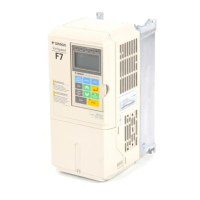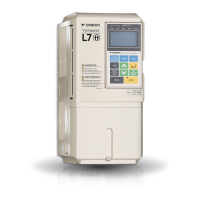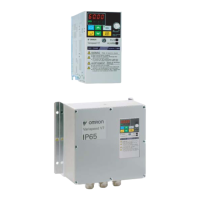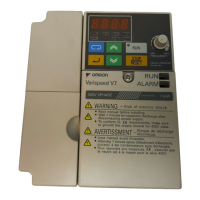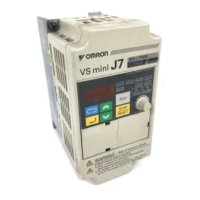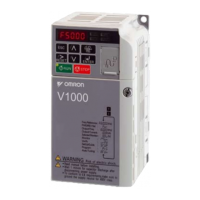6-4
Setting Precautions
Carrier Frequency Selection
When selecting the carrier frequency, observe the following precautions:
• If the wiring distance between Inverter and motor is long: Set the carrier frequency low. (Use the following
values as guidelines.
• If speed and torque oscillate at low speeds: Decrease the carrier frequency.
• If Inverter noise is affecting peripheral devices: Decrease the carrier frequency.
• If leakage current from the Inverter is large: Decrease the carrier frequency.
• If metallic noise from the motor is large: Increase the carrier frequency.
• The carrier frequency can be set to vary depending on the output frequency as shown in the following dia-
gram, by setting C6-03 (Carrier Frequency Upper Limit), C6-04 (Carrier Frequency Lower Limit), and
C6-05 (Carrier Frequency Proportional Gain).
Fig 6.4 Carrier Frequency Gain
* K is the coefficient determined by the set value in C6-03.
C6-03 ≥ 10.0 kHz: K=3
10.0 kHz > C6-03 ≥ 5.0 kHz: K=2
5.0 kHz > C6-03: K=1
• To fix the carrier frequency to any desired value, set C6-03 and C6-04 to the same value, or set C6-05 to 0.
An OPE11 (Data setting error) will occur in the following cases:
• If Carrier Frequency Proportional Gain (C6-05) > 6 and C6-03 < C6-04
• If C6-02 is set from 7 to E.
Wiring Length 50 m or less 100 m or less Over 100 m
C6-02 (carrier frequency)
setting
0 to 6 (15 kHz) 0 to 4 (10 kHz) 0 to 2 (5 kHz)
Carrier Frequency
Output frequency
E1-04
Max. Output Frequency
Output frequency x C6-05 x K
C6-03
C6-04
